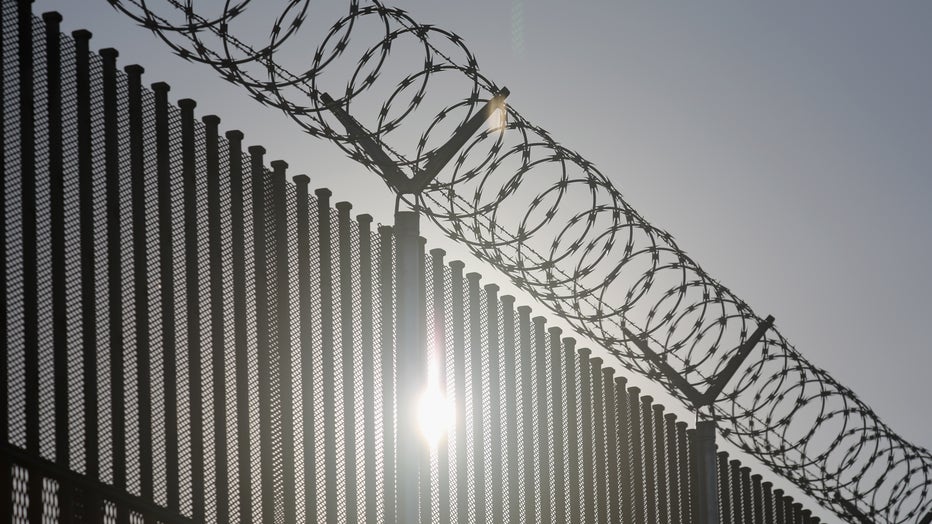Asylum seekers at Canadian border rise sharply as arrests at Mexican border drop


The border fence between the United States and Mexico. The U.S. Border Patrol has reported that illegal crossings from Mexico have dropped some 40 percent along the southwest border since Trump took office. (John Moore/Getty Images)
By Ese Olumhense
Number apprehended at U.S.-Mexico border down 38 percent from 2016
Between February 2016 and February 2017, U.S. Customs and Border Protection (CBP) apprehensions at the U.S.-Mexico border fell 38 percent, an analysis of Department of Homeland Security (DHS) data by The Washington Post showed on Tuesday.
The decrease is even more striking when compared with the number of asylum-seekers leaving the U.S. for Canada within the same period, which more than tripled, according to the Post analysis.
Combined, the implication of the data challenges the narrative pushed by President Donald Trump that the U.S. has an illegal immigration problem — and that the problem is directly attributable to Mexicans crossing the border into the U.S.
In the first two months of this year, border apprehensions dropped 40 percent relative to last year: 18,762 persons were apprehended at the U.S.-Mexico border during this period in 2017, down from 31,578 last year.
This could be reflective of what the Post analysis dubs the “inflection point” at the U.S.-Mexico border. After the 2016 election, apprehensions at the U.S.-Mexico border dropped, the Post’s analysis of DHS data showed, suggesting a correlation between President Trump’s win and reduced illegal migration from Mexico.
‘When Mexico sends its people…’
Despite the trend signaled by Tuesday’s data, and the fact that analyses of U.S. Border Patrol data show apprehensions at the U.S.-Mexico border have been in decline since the early 2000s, President Trump's team’s statements on Mexican migration throughout his campaign and into his first several weeks as president have been anything but sparing.
“They’re rapists,” is perhaps the most memorable claim. In the speech announcing his candidacy in June 2015, President Trump said, “The U.S. has become a dumping ground for everybody else’s problems. When Mexico sends its people, they’re not sending their best. ... They’re sending people that have lots of problems, and they’re bringing those problems with us. They’re bringing drugs. They’re bringing crime. They’re rapists. And some, I assume, are good people.”
President Trump later proposed a border wall between the U.S. and Mexico, to deter those coming from “all over South and Latin America, and probably — probably — from the Middle East,” he said. He also promised again and again that Mexico would pay for its construction. (Mexico’s President Enrique Peña Nieto has promised it will not.)
Now president, President Trump has assured the country, via executive order, that he will fulfill that estimated $15 billion campaign pledge, along with the expectation that he will slash funding to a bevy of federal agencies and domestic programs. The installation would presumably replace the nearly 700 miles of fencing that already stands at the shared border.
Does the U.S. need a border wall?
The rate apprehensions at the U.S.-Mexico border paints a critical picture of the number of undocumented immigrants attempting entry, but it isn't a full picture of just how many people are entering the U.S. seeking to remain. Some migrants are simply not apprehended, after evading CBP officials on their way in.
But the “decline in traffic,” as DHS Secretary John Kelly characterized the 40 percent decrease in apprehension rates between January and February in a celebratory statement last week, might be a sign that the U.S. does not actually need the border wall President Trump has championed.
For reference, Kelly said the drop was further significant because the CBP usually sees a 10 to 20 percent increase in apprehensions at the country’s southern border in the first two months of the year.
President Trump could easily, as DHS already has, write off the decline in apprehensions as an early accomplishment, continuing his promise to be tough on immigration. Judging by the “inflection point” observed at the border after President Trump’s election, it appears the president’s hardline rhetoric may be paying off by discouraging undocumented immigration in the first place.
Staying the rhetorical course and continuing, as Kelly promises, “vigilant” enforcement of immigration laws at the border could ultimately save the country billions by discouraging immigration and, perhaps, decreasing the perceived need for a wall. For President Trump, who is committed to slashing federal spending — signing an executive order Monday that promised a full review of federal agencies and departments to determine where money is being “wasted” — eliminating the need for an expensive construction project by encouraging what Mitt Romney once called "self-deportation" could ultimately provide him with a way to claim political wins on two fronts.

